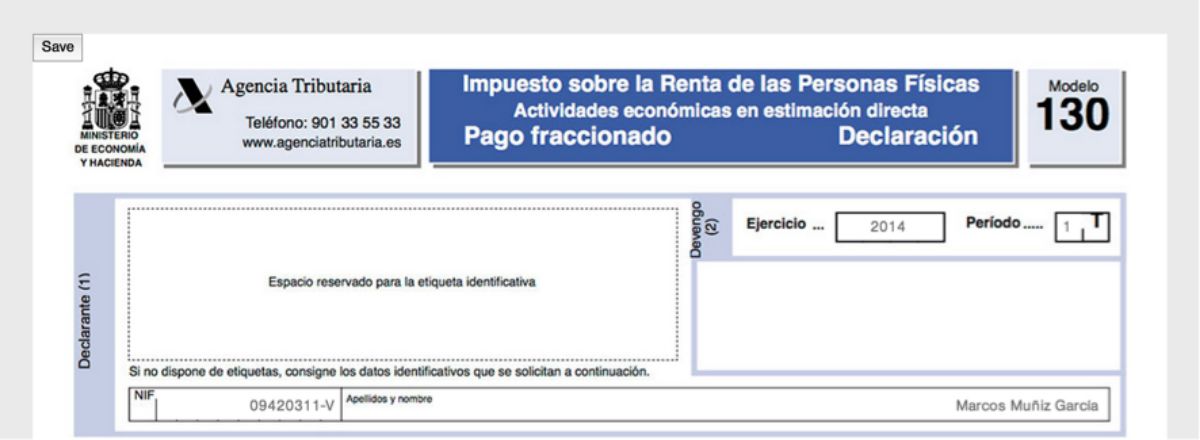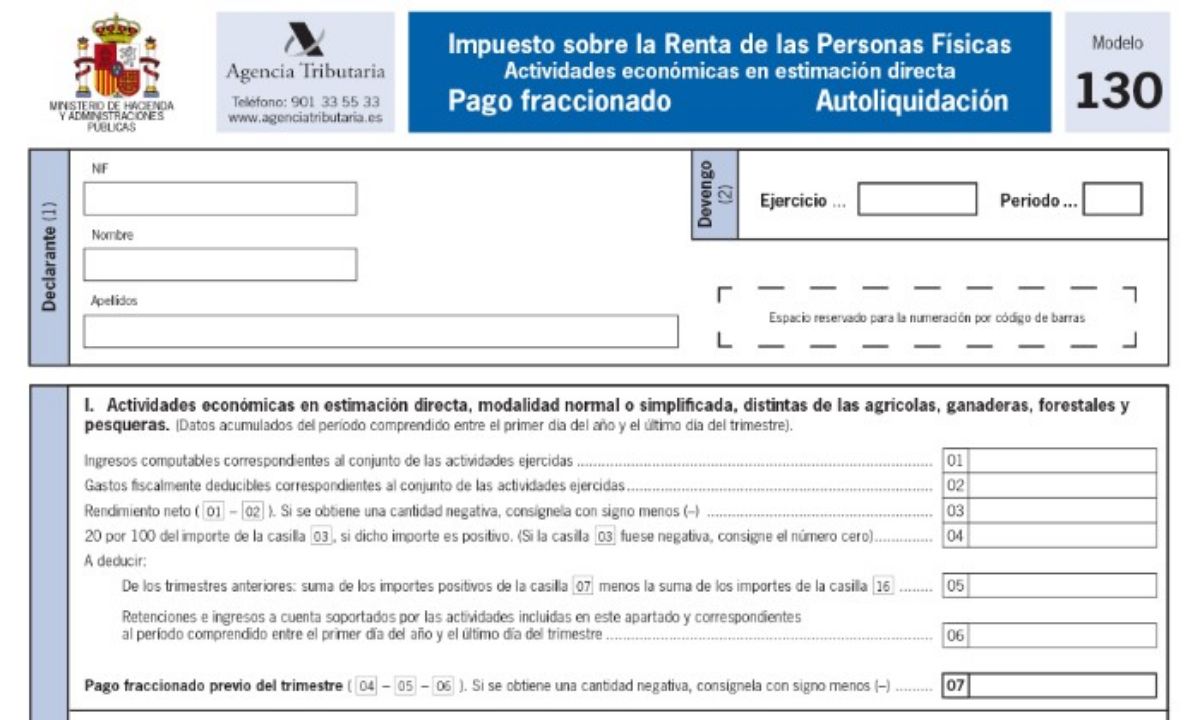
Source What is model 130: Famisenper
When you carry out an economic activity, one of the procedures that you have to carry out is the installment payment on account of personal income tax. This is done through model 130. But, What is model 130?
If you have recently registered, or if you want to know what form 130 is and how to fill it out properly, then we are going to tell you everything you need to know about this procedure and, above all, how to comply with the Treasury so that there is no penalty.
What is Model 130

Source: tax agency
Model 130 encompasses what is the "Quarterly income tax return for individuals". It is a payment that is made in installments (it is paid every three months) for which part of the payment that should be made from personal income tax is paid to the Treasury.
Of course, not all people are obliged to do so, only those that are included in the following cases:
- That they carry out economic activities, including those of agriculture, livestock, forestry or fishing. Of course, they have to establish the direct estimation method, either normal or simplified.
- That they carry out professional activities. Except if 70% of your income already has a withholding or deposit on account. If so, you do not have to fill out Form 130.
- If they are civil partnerships and / or communities of property. In this case, each partner must make the payment based on their participation.
How to fill it

Now that it is clearer to you what form 130 is, it is time to know how you should fill it in so that it is good for the Treasury and does not attract your attention; or worse still, they impose a sanction on you.
You must bear in mind that, In the Declarant section, you must fill in both the NIF and the name and surname. Then, in the accrual area, it is important that you specify which fiscal year it refers to and which quarter period.
When declaring the net return, you must bear in mind that it accumulates. That is, imagine that the first quarter you have made 100 euros in profit. In the second quarter, you have 200 euros. However, when filling in form 130, you have to add the income you declared in the first quarter with that of the second. In other words, in this last quarter it would not be 200 euros of profit, but 300 euros (200 + 100 in the first quarter).
The same happens with the expenses later, you have to add those of all the quarters, expanding the expense that you have had in the one in progress.
En general, model 130 has three different sections.
- Section I where the income and expenses are put and it is established how much is 20% of subtracting the expenses from the income. Afterwards, the withholdings that you may have been having as well as what you have paid from previous quarters are applied and you would obtain a result.
- Section II, focused on those who carry out an agricultural, forestry, fishing or livestock activity, who will have to fill in the model in this part.
- Y section III, which is a summary of all the above where it gives us the final figure, which can be to pay or to compensate.
Step by step in the model

Source: Tax Aid
To make it clearer, keep the following in mind:
- Box 1: there you must put the income for the year.
- Box 2: enter the expenses for the year.
- Box 3: this is automatic, what it does is subtract the income and expenses.
- Box 4: it will ask you to manually calculate how much 20% of the result of box 3 is, provided that this result has been positive. What is negative? Put a zero.
- Box 5: in this gap you will have the sum of two boxes, 7 and 16. These are amounts of the 130 models that you have presented before. If, for example, it is the first of the year, you will not have to put anything here. But yes from the second trimester. That is why it is important that you have the above documents at hand.
- In box 6: you will have the sum of the withholdings that you have applied or have applied to you.
- Box 7: it is another subtraction, from box 5 and 6 on box 4. In other words. What you have to pay (box 4) will be deducted from the withholdings (5 and 6) that are already assumed to have been entered in your name.
So far it would be for self-employed persons or individuals with economic activities. Now, if you work in agriculture, livestock, fishing or forestry, you have to fill in the following:
- Box 8: you must enter the income throughout the year, including grants, aid ...
- Box 9: 2% of the amount of the previous box will be applied without taking into account the expenses.
- Box 10: used to put the withholdings that you have had to apply on the invoices you have made.
- Box 11: It is the one that will subtract boxes 9 and 10, giving a result that can be negative or positive.
Finally, Part III is the summary, and the corresponding boxes are:
- Box 12: where you put the sum of boxes 7 and 11. Again, it can be a positive or negative value.
- Box 13: something that not many know is that, when your income is low, the Treasury allows you a reduction of up to 100 euros. The best thing is that you look for information about that specific box to know the value that you can apply to discount (if you can).
- In box 14: there will be the difference between boxes 12 and 13. Again it can be positive or negative.
- Box 15: used to record negative values. In other words, if you have had negative results in box 19, you must indicate it, in addition, you must bear in mind that the value of this box cannot be higher than that of 14.
- Box 16: if box 14 has been positive and you also pay a loan for having bought or rehabilitated your home, you can deduct those expenses here. How much can you deduct? Well, the amount of box 3 (or 8 if you have agricultural activities, livestock ...). That if, the limit has been imposed at 660,14 euros.
- Box 17: it is easy, the result of subtracting boxes 14 and 15.
- Box 18: you will only have to fill it in if there is a complementary declaration. Otherwise, it remains zero or blank.
- Box 19: finally, this box subtracts 17 and 18, giving a result that is that of model 130. If it is positive, you will have to pay; and if it is negative, you can compensate with the following models of the year (you can also have them return what you have paid more).
In this way, you can have a guide and better understand what model 130 is and how to fill it in properly so that everything is correct.